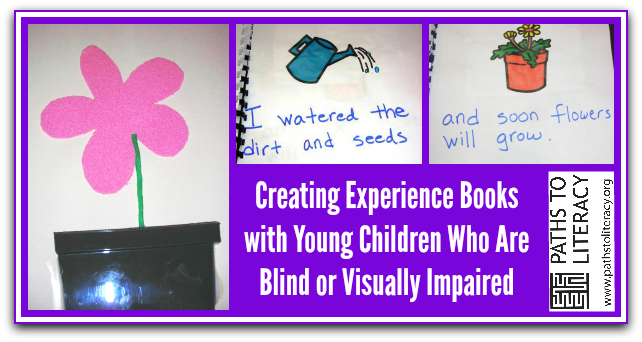Experience Book About Planting Seeds
Submitted by kimberlyd415 on Oct 17, 2012

Experience stories are a wonderful way to expand language and develop concepts. We try to create them every time we go on a field trip or after a special event takes place. The children enjoy reading them over and over and discussing their experiences. We use picture symbols in the print version and tactile materials in the braille version. Ordinarily we would add large print to the braille version as well, depending on the student and where the book will be read. The print version is just below and the braille tactile version is in the Procedure section.
Materials:
- heavy paper
- dark colored markers
- picture symbols (such as Boardmaker or other Mayer-Johnson symbols)
- tactile materials, including real objects or partial objects from the story
- braille labels
- binder
Procedure:
- Discuss with the students what activity is going to take place. Pre-teach any new vocabulary and discuss what will happen.
- Carry out the activity, while discussing key parts of it as it takes place.
- After the activity, review what took place.
- Write down each step or highlight of the event, with the students doing as much of the writing or dictating as possible.
- Illustrate each page with pictures or tactile materials, depending on the student's learning style.
- This can be done as a single activity or spread out over several sessions.
- Bind the book and store it where the students can easily find it.
- Re-read the book together with the child or children who made it.
- Share it with other classmates, friends, and family.
Variations:
There are an unlimited number of topics for language experience stories! Anything that is interesting and meaningful to the child can be used to create a book.

